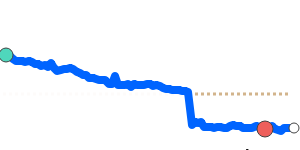The current market bias for USD to TRY is bearish.
Several key drivers are influencing this trend. Firstly, the Federal Reserve is anticipated to implement further rate cuts, leading to a weaker USD. Recent CPI data showing inflation dropping in the U.S. adds pressure on the dollar amidst expectations of more expansive monetary policy. Secondly, the Turkish Central Bank is expected to maintain a significant policy rate cut, which may further weaken the TRY despite a targeted inflation rate. Finally, Turkey's economic outlook suggests a decline in the current account deficit, but external debt concerns may pose risks.
In the near term, the USD/TRY exchange rate is expected to trade within a stable range, reflecting current levels but potentially edging lower.
An upside risk could arise if global commodity prices surge, positively impacting Turkey’s export revenues and supporting the lira. Conversely, a downside risk includes unexpected economic weakness in Turkey, heightening market fears and resulting in further depreciation of the lira against the dollar.

